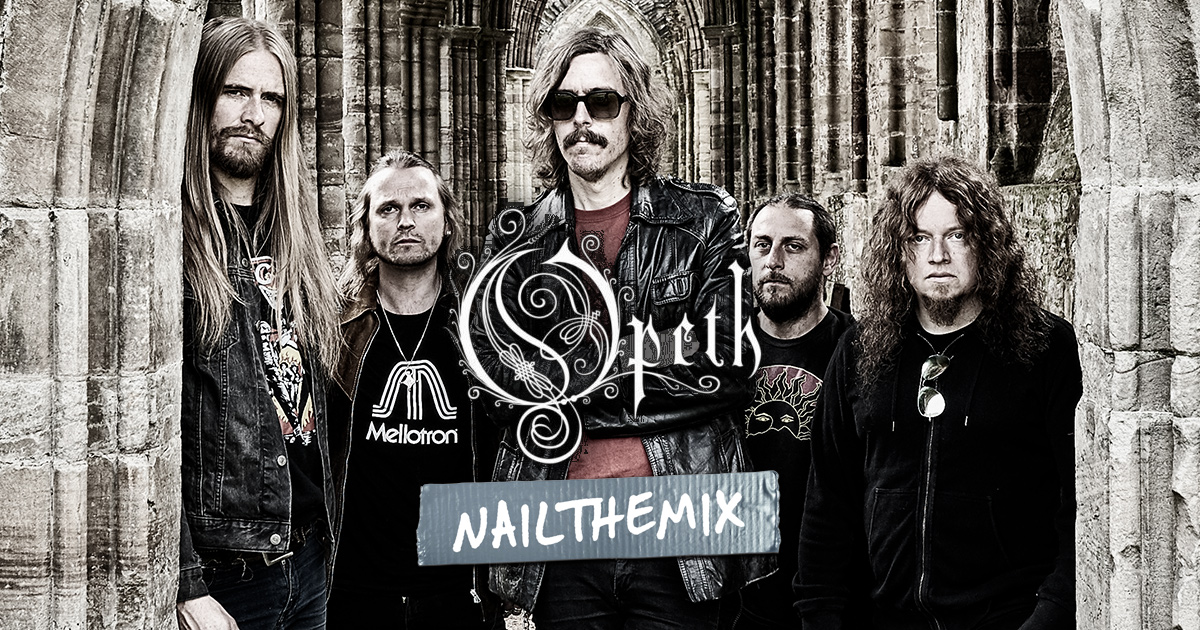
Mixing Opeth: A Deep Dive Into the Dynamic ‘Heir Apparent’ Multitracks
Nail The Mix Staff
Let’s be clear: “Heir Apparent” isn’t just another metal song. It’s a sprawling, eight-minute epic of progressive death metal, and the production, helmed by the legendary Jens Bogren, is a high-water mark for the genre. Getting a look at the raw multitracks is like finding the Dead Sea Scrolls for metal producers.
But when the tracks already sound this good, what’s a mixer supposed to do? This is where the real skill comes in. It’s not about fixing problems; it’s about balance, enhancement, and respecting the incredible performances and tones captured at the source. We’re diving deep into the raw session to uncover the production choices and mixing challenges you’ll face with a track of this caliber. This is exactly the kind of A-list session you can get your hands on every month at Nail The Mix.
Taming the Drum Kit: Reinforcement and Dynamics
Right off the bat, the drum setup looks fairly standard: kick, snare, five toms, and a healthy spread of cymbals and rooms. But the secret lies in the details—and the dynamics.
Sample Reinforcement, Not Replacement
Jens Bogren was cool enough to include the exact samples he used, and this is a key lesson in modern metal production. We’re not talking about full-on sample replacement; this is sample reinforcement.
Take the kick drum. You have the killer natural mic’d sound, full of body and click. Then you have the sample. Blending the two gives you the best of both worlds: the weight and punch of the sample combined with the human feel and low-end cush of the real kick. The same principle applies to the snare, which has top and bottom mics blended with high and low-velocity samples. It’s about augmenting the natural drum, not erasing it.
The Most Important Rule: Preserve the Dynamics
If you approach this mix with a one-size-fits-all, “make everything loud” metal mentality, you’ll ruin it. Opeth is famous for its light and shade, and “Heir Apparent” is a prime example. The song shifts from full-blast intensity to delicate, jazzy sections with intricate ghost notes on the snare and cymbals.
Your compression strategy has to be dynamic, too. You can’t just slam a bus compressor and call it a day. This is a job for automation. You’ll need to ride the faders and adjust your processing to ensure the quiet parts breathe and the loud parts hit with maximum impact without sounding squashed.
Pro Tips for Cymbals and Rooms
- Ungated Toms: The five toms in this session are delivered raw and ungated. While that might seem intimidating, the playing is so clean that it’s the perfect practice for dialing in your gates precisely.
- The Floor Tom Ride Trick: Not 100% stoked on the close-mic’d ride sound? Here’s a hack. Check the mic for the 16″ floor tom. Because of its proximity to the ride, it often picks up a fantastic, full-bodied ride sound. Blending a bit of the floor tom channel (panned appropriately) with the ride’s close mic can add the perfect amount of body and wash.
- Selective Room Mics: You get a ton of room mic options, including tracks labeled “Grunge L/R” and “Ambient.” Don’t feel obligated to use them all, all the time. A specific “grunge” room might sound killer on a blast beat section but muddy up a delicate part. Experiment and automate them in and out where they serve the song best.
The True Rhythm Section: Méndez’s Bass and Standard-Tuned Guitars
This is where Opeth really separates itself from the pack. The rhythm section is a living, breathing entity, not just a wall of low-end.
Bass That Breathes: Beyond the Root Note
Bassist Martín Méndez is a monster. His fingerstyle playing is insanely tight and consistent—a rarity in a genre dominated by pick players. But more importantly, he’s not just following the guitar root notes. He’s weaving intricate, melodic lines that lock in with the drums to create a true bass-and-drum groove.
Your mixing job is to honor that. The bass needs its own space to be heard as an instrument. Digging into the tracks, you’ll find a tasty amped tone captured with a Beta 52, which already has some great grit on it—arguably more characterful than the clean DI. Don’t just tuck the bass under the guitars; use EQ to carve out a home for it so those incredible basslines can shine.
Heaviness is in the Hands, Not the Tuning
Here’s a shocker for modern metalheads: these guitars are in Standard tuning. The crushing heaviness comes from the performance and the arrangement, not from down-tuning to oblivion.
The core tone is built from two sets of rhythm tracks. “Rhythm 1” is the higher-gain, main track, while “Rhythm 2” is a cleaner, lower-gain performance blended in to add clarity and definition. It’s a classic layering technique that keeps the chugs from turning into mud. You can hear how the guitars and bass are often playing complementary parts, creating a rich harmonic counterpoint that is essential to the Opeth sound.
A Masterclass in Arrangement and Source Tones
Beyond the core band, this session is loaded with incredible textures and layers, making it a masterclass in arrangement.
More Than Just Guitars: Layers and Textures
Get ready to get creative. This song features Ebows, a gorgeous Rhodes piano, strings, acoustic guitars, a slide guitar, a ring modulator, and even flutes. These aren’t throwaway parts; they are crucial to creating the song’s epic and unsettling atmosphere. Orchestrating these elements within the mix is a major part of the challenge.
Getting It Right at the Source
People often ask what synth library to use to get epic sounds. This session provides the real answer: use great-sounding real instruments. The Rhodes piano track, for example, is phenomenal right out of the box. It’s warm, rich, and full of character. When your source tone is that good, you don’t need to do much to make it work. It’s a perfect example of why you should focus on capturing amazing sounds from the start, a philosophy we teach in our in-depth production and mixing courses.
The Final Polish: What’s Left for the Mixer?
With meticulously produced tracks like these, your most important skill is learning how to not over-cook them.
A huge part of your time should be spent on the fundamentals: balance and automation. Work the faders. Listen to how each part interacts. The journey of this song from its quietest moment to its most brutal climax should feel intentional and powerful.
This is a mix that will live or die by your automation moves. You’ll be automating levels, EQs, and effects sends to make sure every section gets the treatment it deserves. From the main death metal growls to the filtered megaphone vocals, every element has its place, and it’s your job to guide the listener’s ear through this complex arrangement.
Opeth on Nail The Mix
Jens Bogren mixes "Heir Apparent"
Get the Session
Breaking down these tracks reveals so much about what makes a world-class production. But imagine watching Jens Bogren himself sit down and put it all together, explaining every plugin choice, every fader move, and every decision that went into the final, iconic mix.
At Nail The Mix, that’s exactly what you get. You can get access to this entire session and watch Jens Bogren mix “Heir Apparent” from scratch. Stop guessing and start learning from the pros who created the albums you love.
See how Jens Bogren mixed Opeth’s “Heir Apparent” on Nail The Mix.
Get a new set of multi-tracks every month from a world-class artist, a livestream with the producer who mixed it, 100+ tutorials, our exclusive plugins and more
Get Started for $1





